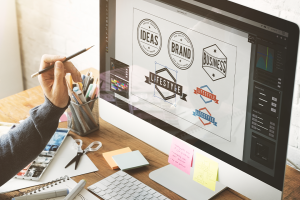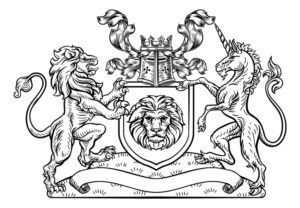Corporate logos can be a major factor in a company’s success. A logo is a visual representation of a brand, but if done well a logo can be much, much more. A great logo manages to convey a lot about the company – communicating what they do, why they are special, and something about their character. Logos can even evoke emotions in customers – reinforcing why the brand matters to them and how it makes them feel.
So how do you squeeze so much information into one little image? With a significant amount of strategy and forethought. Attempting to create one symbol that effectively serves as a visual manifestation of an entire brand is a big responsibility. Fortunately, there are some guiding principles that can provide some direction in developing a logo that embodies the true identity of your brand.
First – understand your target audience
Before we address some key elements of logo design, you’ll need to pull together some thoughts on your brand overall. To develop an effective logo, you must understand your target audience and know what you want to communicate to them.
First, who is your ideal customer, and what matters to them? Knowing who you want to have an impact on is important to developing a relevant logo. What do customers value about you? Is it service, speed, quality? Are you on the cutting edge? More exclusive than your competition? What about your company inspires trust and loyalty? If you’re not sure what your customers love about your brand, ask them.
Second, what do you want your logo to convey? This goes a bit deeper than what product or service you provide. What makes you different or better and why would someone choose your brand over another? Incorporate your brand’s values into your message and make sure it reflects what’s important to your customer.
Five important elements of logo design
Once you have a clear idea of what your logo should communicate, begin to design your logo with these five elements in mind.
1. Simplicity
“I strive for two things in design: simplicity and clarity. Great design is born of those two things.” Lindon Leader
When approaching logo design, simplicity should always remain top-of-mind. It’s easy to get off-track and try incorporating all your great ideas into one image, but simple will always be better.
Overly complex logos do not convey professionalism or confidence, and they often leave the audience feeling confused.
A simple and streamlined logo communicates strength, provides assurance to the audience, and is more memorable.
2. Relevance
“Socrates said, “Know thyself.” I say, “Know thy users.” And guess what? They don’t think like you do.” Joshua Brewer
A great logo is more than just a cool design. It stands for something and should send a clear message about what your brand offers – both in service and in value.
A relevant logo is targeted and purposeful. Remember what matters to your customers and create a design that speaks to them. Take color selection, for example. You have a rainbow of colors to choose from, but understanding WHY you should select a particular color versus just picking your favorite color will put you at a great advantage.
First, what appeals to you may not appeal to your intended audience. And second, colors convey certain feelings. Think about what your audience needs from your brand. Yellow radiates enthusiasm and happiness, red is associated with youth and excitement, and blue conveys trust, strength, and dependability.
3. Versatility
“Beauty is the harmony of form and function.” Alvar Aalto
Throughout a logo’s lifecycle, it will be used in a variety of ways. Certainly, you envision your logo as the anchor to your website, on brochures, business cards, and even t-shirts. Keep in mind that various platforms or applications won’t always offer the ideal scenario and your logo will need to adapt.
Logos should be designed to be very large (think billboards) or very, very small (like on a pen) while still maintaining their integrity. The background color may change and along with size, logos should be versatile enough to appear in black and white.
Certain design elements like script fonts don’t always lend themselves to being scaled down for a social media profile. Be sure to keep versatility in mind when designing your logo.
4. Uniqueness
“Insist on yourself; never imitate.” Ralph Waldo Emerson
Researching other logos for inspiration is a great idea. Just be careful not to design your logo to be too much like everything else out there.
Your logo should set you apart, be recognizable as distinctively yours, and not allow you to be confused with another brand.
5. Memorable
“Good design is making something intelligible and memorable. Great design is making something memorable and meaningful.” Dieter Rams
Sticking with the “simplicity principle” is a great first step in developing a memorable logo. Your audience should be able to recall specific elements of your logo after seeing it very briefly. Depending upon the channel or platform, a consumer may only see your logo for a few seconds. Will this be enough to deliver a sense of what your brand is all about?
If your logo is overly complex it will be easily forgotten.
Designing a logo can be a great adventure. It’s often a customer or potential customer’s first introduction to your brand, and we all know how important first impressions can be! Understanding who your audience is and the message and tone you want to convey to them is a logical first step.
As you begin to construct your strongest visual identifier, keep these key elements in mind to ensure you create a logo that makes a powerful statement about your brand and resonates with your audience!
Ready to get started? Browse through our logo maker to see hundreds of designs.







